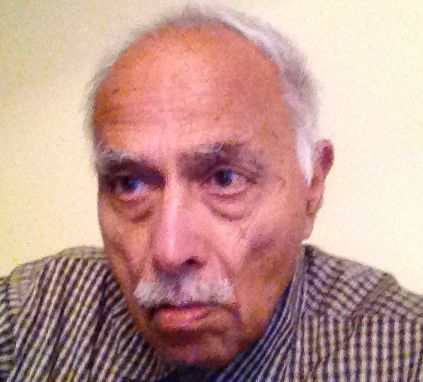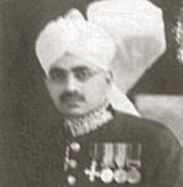Latest Contributions
Read More Contributions
Pre-Partition Punjab Vignettes
Category:

Dr. Anand - an unholy person born in 1932 in the holy town of Nankana Sahib, central Punjab. A lawyer father, a doctor mother. Peripatetic childhood - almost gypsy style. Many schools. Many friends, ranging from a cobbler's son (poorly shod as the proverb goes) to a judge's son. MB from Glancy (now Government) Medical College Amritsar, 1958. Comet 4 to Heathrow, 1960.
Widower. Two children and their families keep an eye on him. He lives alone in a small house with a small garden. Very fat pigeons, occasional sparrows, finches green and gold drop in to the garden, pick a seed or two and fly away.
Ed. Note: The text has been extracted from an extended informal email discussion with Jatinder Sethi. Some of what Mr. Sethi wrote is available in Pre-Partition family memories.
Shahukaar. This spelling reflects more accurately, the pronunciation of the local Punjabi word for moneylender. I am sure it was also called Sahukar.
The Shahukaar would generally speaking, sit or rather lie, on the rich Persian carpet, propped up on big, fat, round, pillows. Possibly smoking a hooka. The clients came, requested help, addressing him as "Shah Jee" or "Lalla Jee."
Shah Jee also very often did Aarhat (acted as a middleman).
Shah Jee had the most impressive house in the town. With a two-horse carriage. Forget what it was called. A few cows, and perhaps a buffalo or two in the courtyard at the back. Generous with lassi and even milk for anyone.
Shah Jee was respected by all - including the policemen, the Superintendent of Police and the Deputy Commissioner.
*****
Local people who were not familiar with English addressed the Civil Surgeon as Silver Surgeon.
In those days, only the big criminal lawyers had big convertible cars. Government officers, such as the civil surgeon, the Superintendent of Police (SP) and the Deputy Commissioner (DC) had more modest cars, in addition to the two-horse coaches.
The SP and the DC also had their ghoras (horses). The ghora was mandatory for these two officers. The Civil Surgeon, if of the Indian Medical Service, had to be an equestrian but did not need to keep a horse.
The Turray waalay were, of course, huge landlords and good friends of the Sarkaar (government).
Turray refers to the elegant pugree (turban) worn by the elegant Muslims, and sometimes, in the Muslim majority Western part of the Punjab, by elegant Hindus too. The pugree had the cloth, mostly white, wound round a conical cap, with a fan-like comb standing erect, and the other end long and loose, hanging down. Unless it rained furiously, the turban was a sight to behold.

Sir Sikandar Hayat Khan with a turray pugree
If I remember correctly, one of the Hayats was the Prime Minister of Patiala (it was Liaqat Hayat Khan). Their Britannic Majesties, through the Viceroy and he through the Political Agent, would make sure that the Sikh ruler had a Muslim Chief Minister, and the Muslim ruler had a Hindu or Sikh chief administrator. As far as rumour went, the Patiala ruler, Sir Bhupendra Singh, was well-served.
*****
I went to Bhera only once. I think in 1944-45. My father took me. My grandmother was away, I think on one of her numerous pilgrimages. So I just saw the locked front door. Purian daa mohalla (The mohalla - neighbourhood - of Puris). Anandaan di gullee (Street of Anand familiies).
Did go to Bhera in 1995. With my daughter. Kindness of a Lahori friend who was a surgeon in Lahore. We had become friends when we were both working at the London Chest Hospital. Tried to see the house. Were told, khatam ho gastreet.yaa, 1947 (destroyed in 1947).
*****
The picture in the Punjab at least. Bengal had District Collector who was the counterpart of the Punjab's Deputy Commissioner (DC). The DC was the civil head of the administration. But was not the boss pf the District and Sessions Judge, who was the officer with the power to hang murderers.
We had five Commissioners: Rawalpindi, Multan, Lahore, Ambala, and Jalandhar.
The Commissioner answered to the Laat Sahib Bahadur, i.e., the Governor of the province, who was usually a peer of the realm, sometimes a knight (like Glancy of Amritsar's Glancy Medical College).
(Ed. Note\; The last three Governors under British rule were Sir Henry Duffield Craik (1938-41), Sir Bertrand James Glancy (1941-46), and Sir Evan Meredith Jenkins (1946-47).)
Each Commission was divided in to a few districts. The civil head of the District was the DC, answered to the Commissioner. The Commissioner was usually an Indian Civil Service officer.
The Sessions Judge. Appeals against his judgement - hanging or Kala Paani (exile) in the Andamans, or life imprisonment in the Punjab Jail (we did not call it the Prison) - went to the High Court in Lahore.
The Superintendent of Police, an Indian Police Service officer.
The Silver Surgeon headed all those medical services in the district, which were under the supreme control of the Inspector General of Hospitals of the Punjab, based in Lahore. He was also the doctor who performed "post-mortem exams" on suspicious deaths - suspicious in the eyes of the police.
He was an IMS officer. (Indian Medical Service). In the early 1900s, mostly a Scot, or English, Welsh, or Irish. In times of war, he served, very often, in the army. If UK (non-Indian), he was mostly, Cambridge, Oxford, Edinburgh etc. man.
He had passed the IMS exam - like the ICS and IPS men.
The rare Indian was almost always a graduate of a prestigious UK university.
Under him were the Assistant Surgeon etc. in the Civil Hospitals.
When he went on tour in the district, the hospital drives were sprinkled with red in his honour,
In places, district and cities, there was the District Medical Officer of Health (MOH) and the city MOH. The Inspector General of Hospitals of the province was also the boss of these services, which were preventive services and controlled plague, cholera, etc.
*****
There used to be in Lahore the Tribune newspaper. Founded and funded by Sardar Dyal Singh Majithia. The Majithias were well-heeled. May be still are.
After Independence, the Tribune recommenced publishing from Ambala. Later moved to its present abode in Chandigarh.
Sardar Dyal Singh also founded the Dyal Singh College in Lahore. Don't know what happened to it. (Ed. Note: It is still functioning in Lahore).
One of Sardar Dyal Singh's friends and associates was Rai Sahib Ruchi Ram Sahni. He was the first kala aadmi (dark person) to become the Professor of Chemistry at Government College, Lahore. Before 1914. Returned his Rai Sahib title after the Jalianwala Bagh massacre, as I remember being told. Of course I was not around then.
Died in Bombay in 1948. A pharujee (Punjabi language version of refugee.)
One his descendants, Ms Neera Burra, has edited his autobiography and published it through Oxford University Press. I have never met her. I must have met her grandmother when she was young (pre-1947) but cannot remember her.
*****
October 2017.
THE RAILWAY LINE from Lahore to Sheikhupura crosses the Ravi river. The railway bridge was rather high. There was nothing to hold on. Only the railway sleepers to step on in if you were walking. But no one was foolish enough to do that. It was a long, long bridge. And it was a long way down to the River. Nobody wanted to fall down – except if you were a good swimmer and not afraid of water snakes and mugger machh (crocodiles), which were said to subsist on fish. Never saw a mugger machh in Ravi, nor in Jhelum, where there were said to be the large variety which Liked to swim under the ferry boats and tip them over.
When my mother, a doctor, was posted at Khewra Salt Mines Hospital, sometimes she had to cross the Jhelum by these paddle boats to deliver babies which were stuck. She had no servant then. I was at High School at Lahore, with my father trying to coach me for the matriculation exam. With my mother, there was my brother, about ten years old, and my sister about eight years old. When my mother went out, I presume my brother stayed with friends, and my sister accompanied my mother.
That would mean a tonga ride to the river at Pind Dadan Khan, then a boat ride in the dark. After that, another ride on a tonga or a bullock cart for a domiciliary delivery. Back home the same way the same night, or early morning. Then, back to school. Joys of being a little daughter of a lady doctor in the pre-partition Punjab government service.
______________________________________
© Joginder Anand 2017
Add new comment